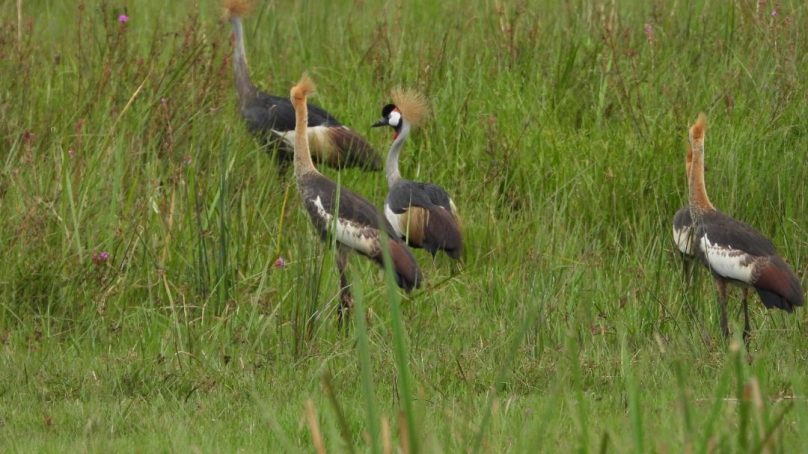
At the break of dawn in Kapsisiywa, a lone crested crane flutters down onto the thinning papyrus reeds of King’wal swamp. Its incessant squawks pierce the cold morning air, its feathers ruffled and body frail.
Once part of a majestic flock that dominated the skies, the solitary grey crowned crane is now a haunting reminder of a species whose survival is in peril.
For generations, King’wal swamp, the largest water tower in the North Rift was home to thousands of cranes, locally referred to by the Kalenjin as Moi Kong’ony, a sacred emblem of unity, humility and life. But today, locals fear the bird’s enchanting song may soon vanish forever.
To save the endangered species, a group of 15 youths have launched an ambitious initiative to restore the swamp’s degraded marshes, replant reeds and protect the cranes’ breeding grounds. Leading the charge is Wilson Kiptum Saina, who says unchecked human activity has devastated the swamp.
“The intense farming along the river has drained water and shrunk the swamp. The ecosystem that sheltered the cranes is collapsing. We are encouraging farmers to adopt eco-friendly practices and plant indigenous trees along riverbanks,” Saina explained.
Elders recall a time when the birds symbolised abundance. At 82, Joseph Kitur reminisces about his childhood when the cranes filled the sky and inspired songs.
“They were not ordinary birds, we believed they brought life and blessed families with children. Now pesticides and habitat destruction have wiped them up,” he said.
A Kenya Wildlife Service (KWS) survey in 2019 revealed that the country’s grey crowned crane population had fallen to 7,776, down from 12,500 in 2015. Across Africa, only about 30,000 remain in 15 countries.
KWS Conservation Secretary John Chumo warned that poaching and illegal egg smuggling worsen the decline.
“Globally, crane populations have dropped by 80 per cent in 30 years. Chemicals are poisoning their habitats and human activities are accelerating climate change. We must rescue the remaining flocks,” he said.
Country Director of International Crane Organization Joseph Mwangi urged both national and county governments to reclaim water towers and restore breeding sites.
“Communities must embrace sustainable farming that expands reed cover. These wetlands are not only vital water sources but also sanctuaries for endangered birds,” he noted.
For the youth of Kapsisiywa, protecting the crested crane is more than an environmental fight, it is about preserving their culture and identity.
As one of the last cranes continues to call from the reeds, the community hopes its voice will not fade into silence.
- A Tell Media / KNA report / By Linet Wafula







